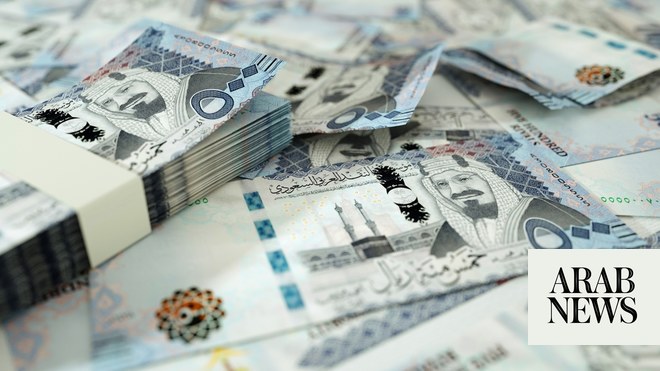RIYADH: The International Monetary Fund has approved the disbursement of approximately $820 million to Egypt following the completion of the third review of the country’s extended agreement.
The IMF approved an expanded $8 billion support program for the African country in March, after the Gaza crisis took a toll on its economy, slowing tourism and halving revenue from the Suez Canal due to Yemen's attacks on Red Sea shipping.
The agreement was made under the Extended Fund Facility, a program designed to assist countries with severe medium-term balance of payments problems resulting from structural issues that require time to address. Egypt's 46-month EFF agreement was approved on December 16, 2022.
According to the international organization, Egypt has made significant progress in its efforts to stabilize the economy. While inflation remains high, it is gradually declining. A flexible exchange rate regime remains central to the program, the IMF said in a press release.
Since the first and second combined reviews in March, Egypt has seen improvements in macroeconomic conditions. Inflation is slowing, foreign exchange shortages have been addressed, and fiscal targets, including those related to infrastructure spending, have been met.
“These improvements are starting to have a positive effect on investor confidence and private sector sentiment,” the IMF added.
Maintaining a flexible exchange rate and a liberalized exchange rate system is essential to prevent external imbalances, while the central bank's data-driven approach is necessary to further reduce inflation.
The fund said continued fiscal consolidation will help manage public debt, while efforts to strengthen domestic revenues and contain fiscal risks in the energy sector will ensure the availability of resources. These measures are needed for essential spending on health and education, creating fiscal space for more social spending to support vulnerable groups.
“Although progress has been made in some key structural reforms, more efforts are needed to implement the state ownership policy,” the press release added.
Strengthening the resilience of the financial sector, improving governance practices and increasing competition in the banking sector should be key priorities, as they are essential to steering Egypt towards private sector-led growth that creates jobs and opportunities for all.
Egyptian Finance Minister Ahmed Kojak said that the IMF's approval of the third review under the economic reform program represents a vote of confidence in the government's program, which includes financial and economic reforms and goals.
He added that this also represents a reassuring message that reflects the Egyptian economy's ability to improve stability.
IMF Deputy Managing Director and Acting Chair Antoinette M. Sayeh said the reforms were yielding positive results, with exchange rate unification and monetary policy tightening, reducing speculation and moderating price growth.
Sayeh said: “Policy settings are expected to help maintain macroeconomic stability. A sustained shift to a flexible exchange rate regime and a liberalized foreign exchange system, continued implementation of a restrictive monetary policy stance and further fiscal consolidation, along with the proper implementation of the framework to monitor and control public investment, should support internal and external balance.”
He added that allocating part of the financing from the Ras El-Hekma agreement to reserve accumulation and debt reduction provides an additional cushion against shocks.
In February, a private consortium led by ADQ, an Abu Dhabi-based sovereign wealth fund, signed an agreement with Egypt to invest $35 billion in Ras El-Hekma, a Mediterranean coastal region 350 km northwest of Cairo. This marks the largest foreign direct investment in Egypt's history.
Looking ahead, the IMF official said that implementing the structural reform agenda is key to inclusive and sustainable growth. Raising tax revenues, improving debt management, and using divestment resources for debt reduction will enable more productive spending, including targeted social spending.
Returning energy prices to cost-recovery levels by December 2025 is essential for reliable energy supply and sector balance. Strengthening the governance of state-owned banks, advancing state-owned property policy, increasing fiscal transparency, and leveling the economic playing field are essential to attract private investment.
“Risks remain significant. Regional conflicts and uncertainty over the duration of the disruption to trade in the Red Sea are important sources of external risk,” Sayeh said.
He added: “Maintaining appropriate macroeconomic policies, including a flexible exchange rate regime, would help ensure economic stability. Making significant progress on the structural reform agenda would significantly improve growth prospects. Prudently managing the recovery of capital inflows will also be important to contain potential inflationary pressures and limit the risk of future external pressures.”
